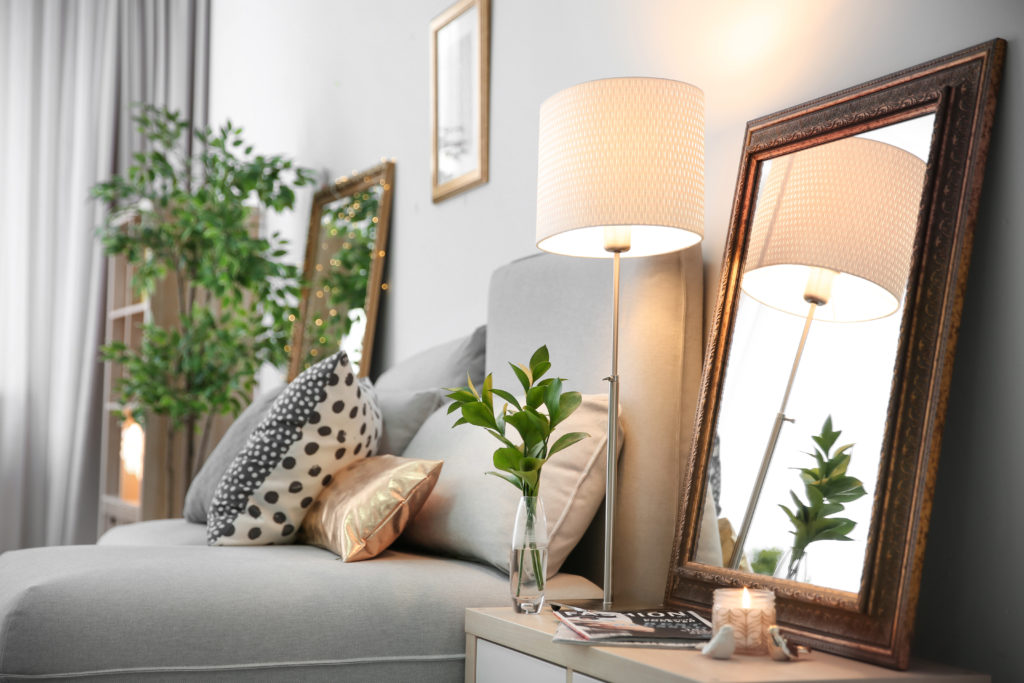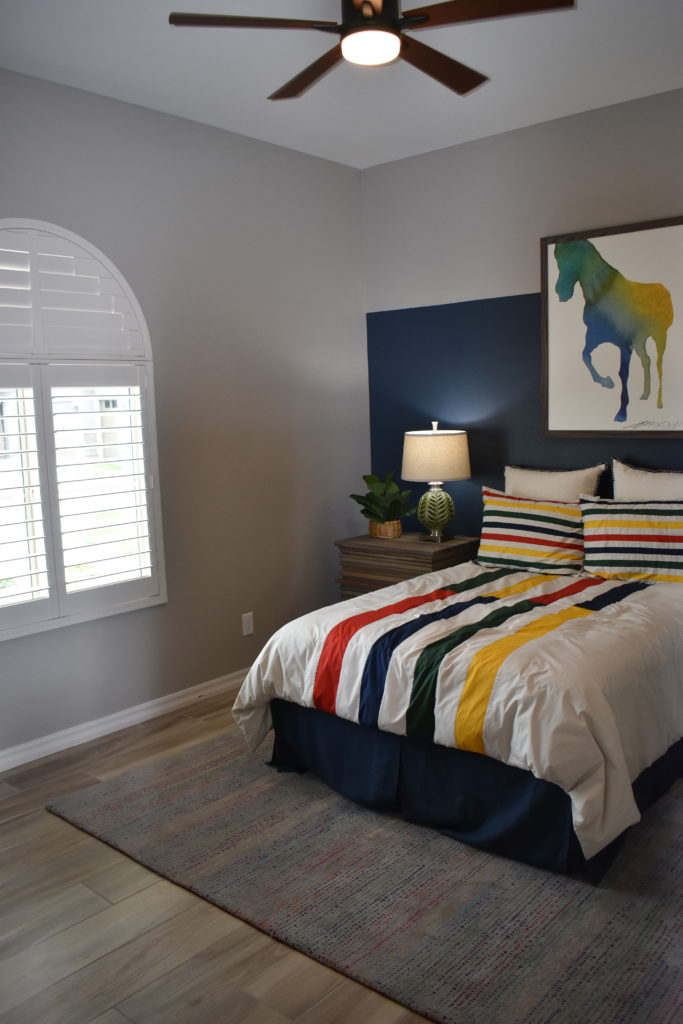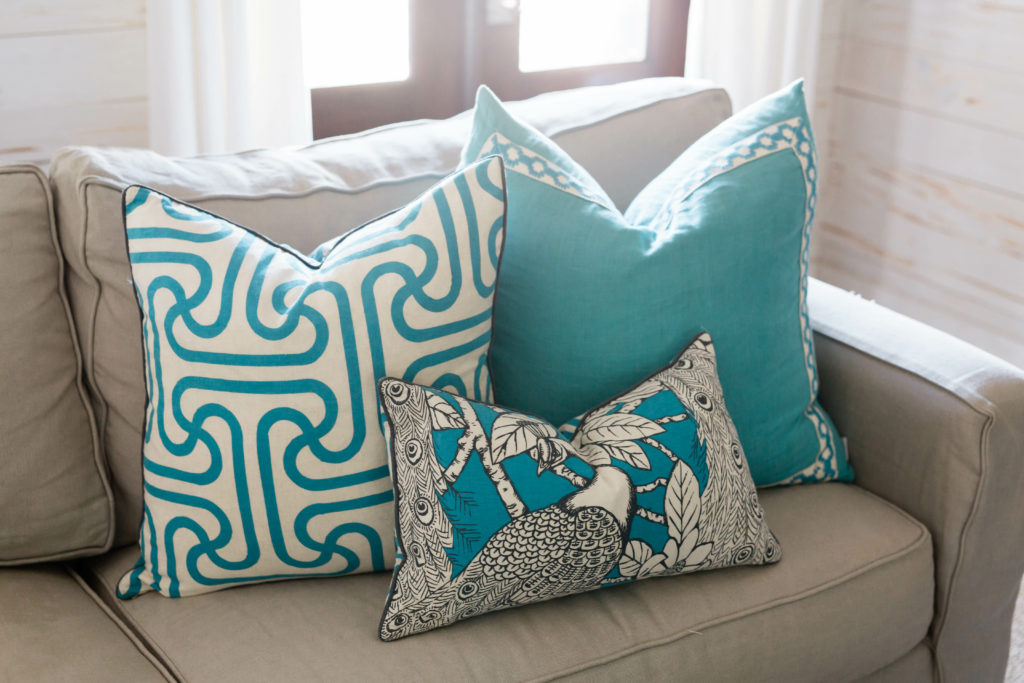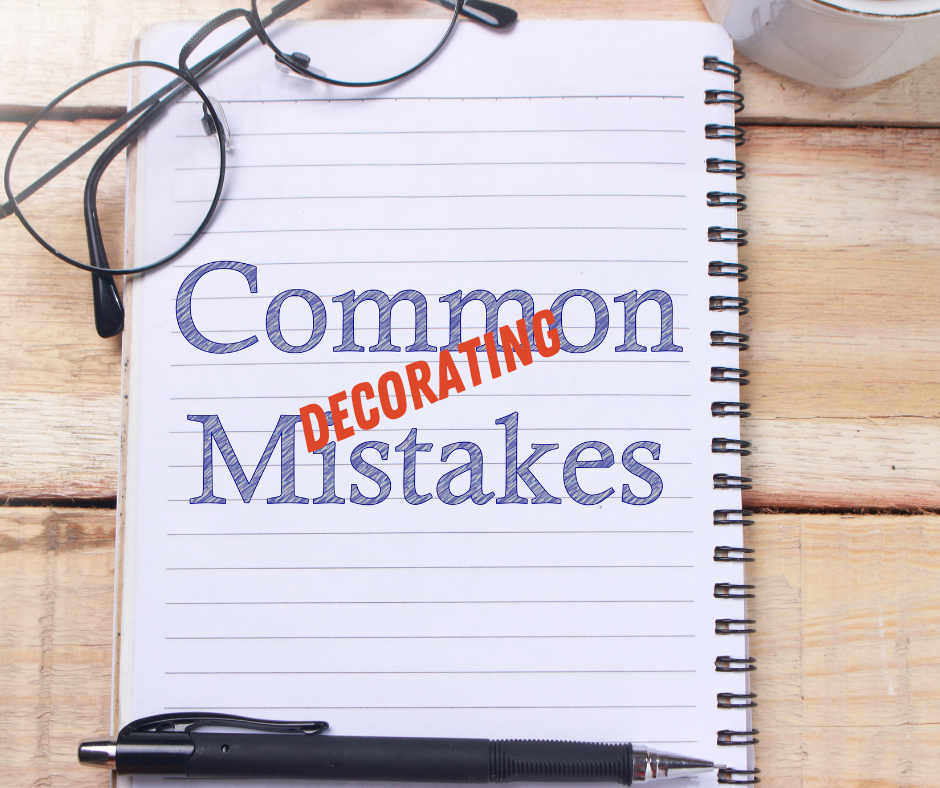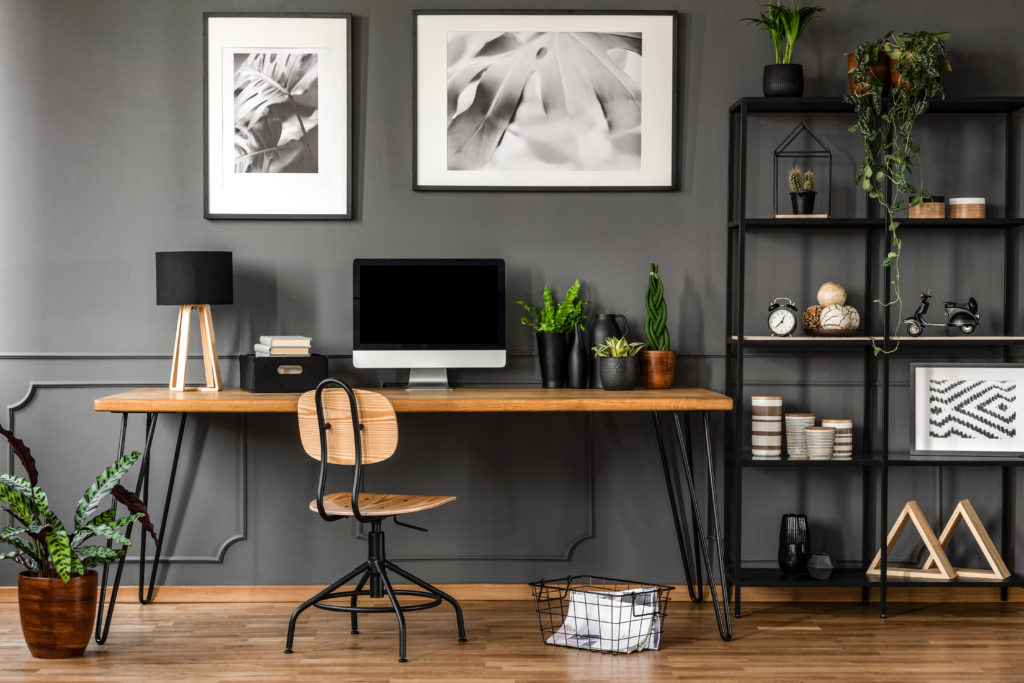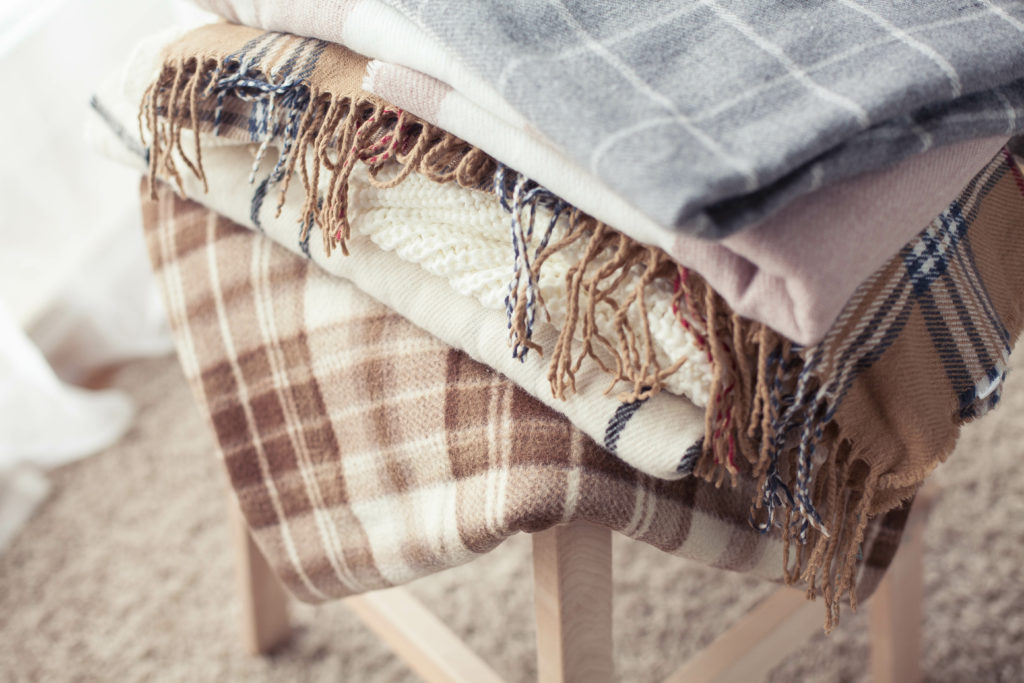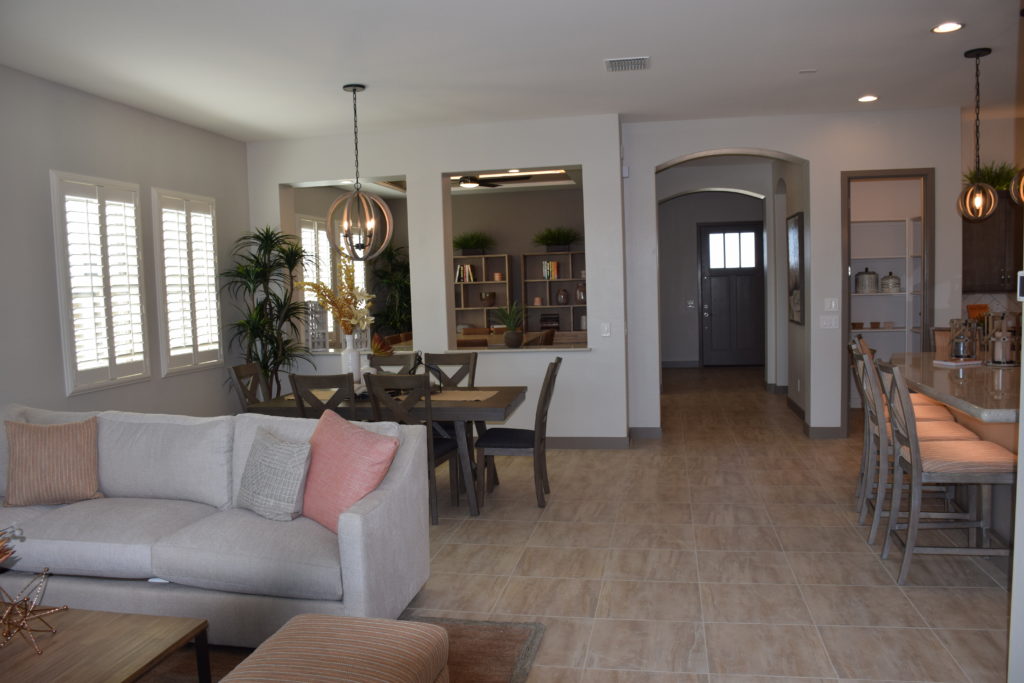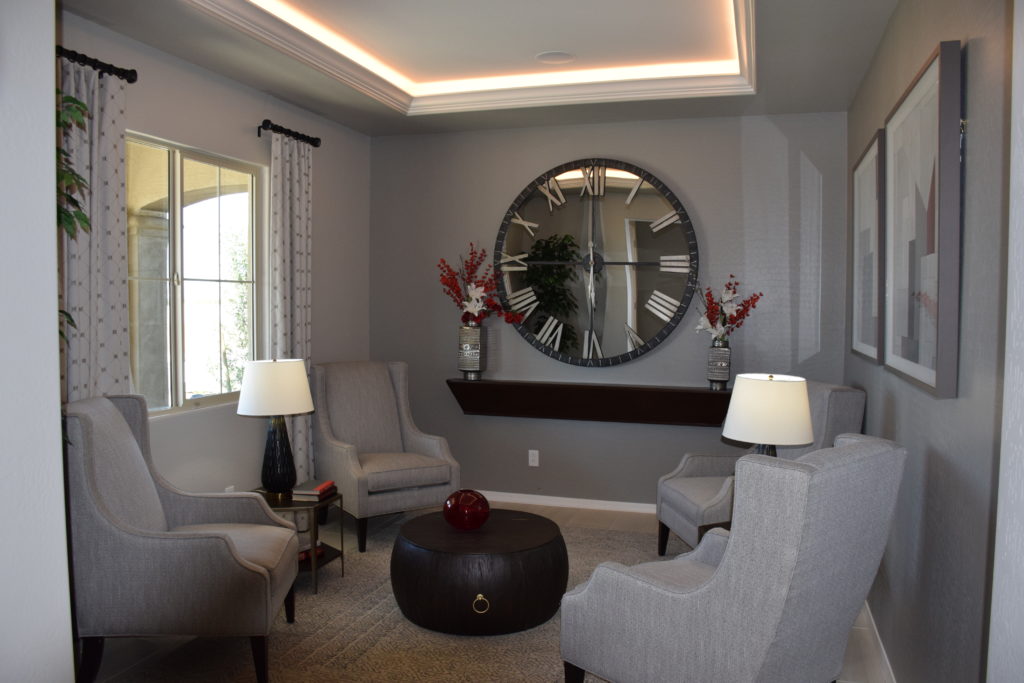
Monochromatic decorating has a certain sophistication level that is perceived as elegant and classic. If you are not careful this style can easily become dull and lackluster. Let’s take a look to find out how to successfully pull off this look.
The most important factor in this style of decor is to create plenty of contrast. Contrast can be created by using light and dark monochromatic colors. An example of this could be contrast created with the help of the dark trellis or geometric pattern on accent pillows and dark fabric used on the drapery. Contrast could be made with a dark tray on a white table. An area rug with thin dark stripes is another example. Espresso brown is a common color of contrast against light colors and white.
Textures and layering are also important when decorating a monochromatic style. Example: Upholstery fabric on the sofa with a nice textured fabric, paired with different fabrics on the accent pillows. If the fabrics in this example not been mixed, the sofa would be washed out and boring. Another example is drapery panels coupled with the sheers. The can create an in-depth layer of texture and contrast.
The accessories in the room can also create the contrast we are looking for. Do this with glass and a little bit of shiny metal. This can add another layer of texture as well as some glitz. Glass items are always helpful when decorating in a monochromatic style.
Make sure to keep some life in the space. Fresh-cut flowers are an easy way to add life to a space. If no greenery appears in a monochromatic space it may feel cold and dull. In fact, all interior spaces benefit from plants, flowers and greenery. It is important to always place plant life within an interior!
Finally, the material of the floor is an important point to factor into the overall decorating scheme. Be mindful to the contrast running through the remaining space.
Let us know if you need further advice about your monochrome décor. If you have an example, post a photo below!

